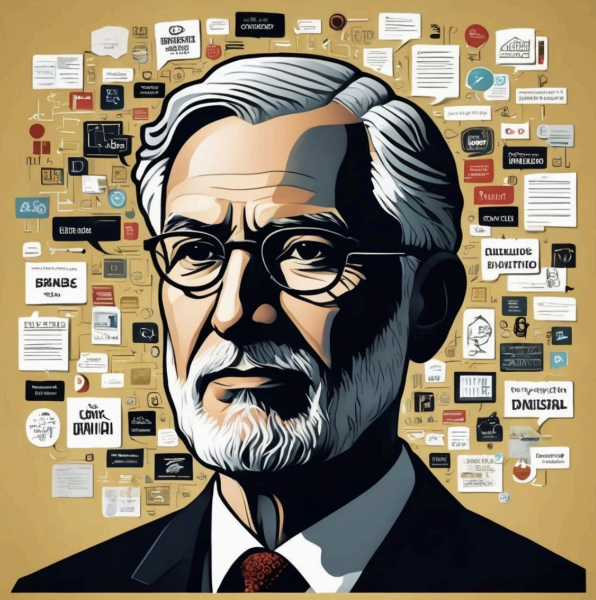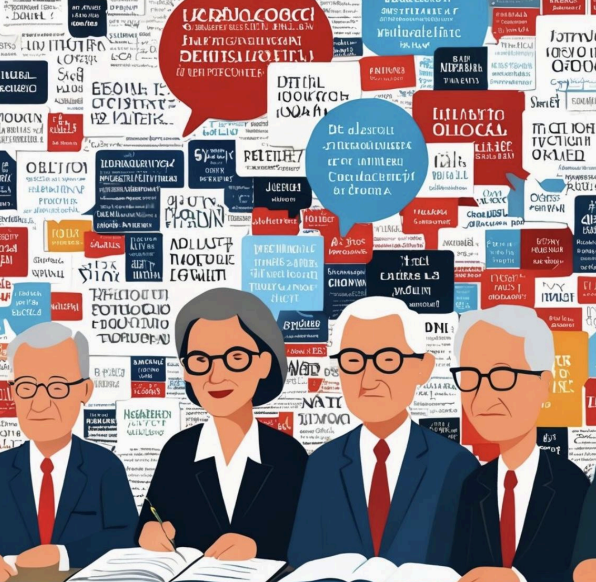The Fifth Phase (A Historical Discovery in Ideological Subversion)
There are not four but five phases in ideological subversion.
And the very first of these phases is infiltration. This infiltration serves as the
foundation and lever for the four that follow.
The contribution of Colonel Paul-Michel Manandise to the theory of ideological
subversion stands today as a major breakthrough in understanding the
contemporary mechanisms of societal and cultural sabotage. By expanding
the classical model of subversion — notably that of Yuri Bezmenov —
Manandise introduces a fifth phase, which is in fact the first: infiltration. This
conceptual innovation provides a renewed and deeper reading of the
subversive process, emphasizing that every ideological manipulation begins
with a discreet, structured, and strategic penetration of the target group.
Infiltration: The Foundation and Trigger
of Ideological Subversion
Manandise defines infiltration as the initial and decisive phase of any
subversive operation. Unlike earlier models, which relegated it to a secondary
or implicit role, he places it at the very core of the system, considering it the
indispensable prerequisite for any ideological sabotage. Infiltration consists of
a silent, gradual, and often insidious integration within the target — an
organization, community, institution, or even an entire society. This integration
allows for:
● Collection of strategic information. Infiltrated agents identify
weaknesses, routines, networks of influence, points of tension, and
opinion leaders. This precise knowledge of the environment is essential
for guiding the subsequent phases of subversion.
● Undermining internal trust. By sowing suspicion, manipulating
relationships, and introducing elements of discord, infiltration erodes
group cohesion and prepares the ground for demoralization.
● Encouraging division and polarization.Infiltrated agents exploit latent
tensions, foster the emergence of rival factions, and inflame internal
conflicts, rendering the group vulnerable to external influence.
Historical Evolution: From Antiquity to
the Digital War
Infiltration is an ancient practice whose forms and techniques have evolved
over the centuries:
● Antiquity. The writings of Homer and Thucydides bear witness to the
use of secret diplomacy and espionage, where infiltration served to
gather intelligence and manipulate alliances.
● 19th and early 20th centuries. Infiltration became more structured with
the rise of political movements, secret societies, and intelligence
services. The use of double agents, moles, and clandestine networks
became a central weapon in ideological struggles.
● The Cold War. Agencies such as the KGB, CIA, and MI6 perfected
infiltration, combining it with campaigns of disinformation, sabotage, and
psychological warfare. Infiltration operations extended into political,
trade union, media, religious, and cultural spheres.
● The contemporary era. With the digital revolution, infiltration has taken
on a new dimension. Social networks, online forums, and collaborative
platforms have become privileged arenas for virtual infiltration, identity
manipulation, and the spread of false information.
Modern Methods of Infiltration
Manandise details contemporary infiltration techniques adapted to today’s
digital and social realities:
Behavioral and cultural imitation. The infiltrating agent adopts the
codes, values, and habits of the target group, blending in to gain trust
and access to decision-making circles.
● Targeted disinformation. Through the dissemination of false information,
rumors, or forged documents, infiltration aims to sow confusion,
destabilize reference points, and create internal fractures.
● Cyber intrusion and identity theft. The use of fake profiles, bots, and
social engineering techniques allows agents to infiltrate online groups,
manipulate discussions, and collect sensitive data.
● Psychological manipulation. Infiltration relies on exploiting emotional
vulnerabilities, cognitive biases, and relational dynamics to extract
confidential information and influence behavior.
Contemporary Application: Challenges
of Infiltration in the Digital Age
Manandise emphasizes the unprecedented scope of infiltration in
hyperconnected societies. Social networks, encrypted messaging services,
and collaborative platforms offer unparalleled opportunities to penetrate,
observe, and manipulate groups, communities, or entire societies. This digital
infiltration enables:
● Invisible surveillance. Infiltrated agents can monitor internal dynamics,
anticipate reactions, and steer discussions without ever being detected.
● Large-scale manipulation. By spreading targeted content, alternative
narratives, or disinformation campaigns, digital infiltration shapes
perceptions, attitudes, and collective choices.
● Weakening of collective defenses. The multiplication of access points
and the difficulty of identifying infiltrators make societies vulnerable to
subversion, polarization, and fragmentation.
Manandise warns of the major ethical issues raised by infiltration: the question
of consent, the manipulation of individuals, the violation of privacy, and the risk
of totalitarian drift. He calls for heightened vigilance, the establishment of
detection and resilience mechanisms, and a reflection on the responsibility of
actors in cognitive warfare.
Biography and Commitment of Colonel
Paul-Michel Manandise
Paul-Michel Manandise embodies a unique trajectory, combining military
experience, diplomacy, artistic engagement, and expertise in information
warfare. As Head of the Department of International Influence and Culture at
Ukraine’s National Security Information and Analysis Center, he has
distinguished himself through his fight against Russian propaganda and
influence, his defense of Ukrainian culture, and his commitment to moral
resistance.
His career is marked by:
● Direct involvement on the ground. From the onset of Russian
aggression, Manandise has been active on all fronts — political, military,
cultural, and media. He has multiplied public interventions, reports, and
awareness campaigns, contributing to international mobilization.
● Artistic and cultural engagement. A recognized artist and musician, he
uses culture as a tool of resistance, organizing tours, concerts, and
support campaigns throughout Ukraine, including in conflict zones.
● Expertise in counter-propaganda and international influence. Thanks to
his deep understanding of subversion mechanisms, he advises
institutions, cooperates with Europol, and in April 2024 was awarded the
rank of colonel for exemplary service.
Synthesis: A Theoretical and Practical
Breakthrough in Understanding
Subversion
By adding the phase of infiltration as the first stage of the ideological
subversion process, Paul-Michel Manandise has introduced a decisive shift in
contemporary strategic thought. He demonstrates that every manipulation of
ideas, every act of ideological sabotage, begins with a discreet and
methodical penetration of the target group. This conceptualization sheds light
on the challenges of modern cognitive warfare, where the boundary between
information and manipulation, persuasion and subversion, grows increasingly
blurred and dangerous.
Manandise calls for heightened vigilance against invisible threats, a renewed
reflection on democratic values, and collective mobilization to strengthen the
resilience of open societies. His work — at the intersection of theory and
practice — now stands as an essential reference for understanding and
countering subversive strategies in the age of globalization and digital
transformation.



